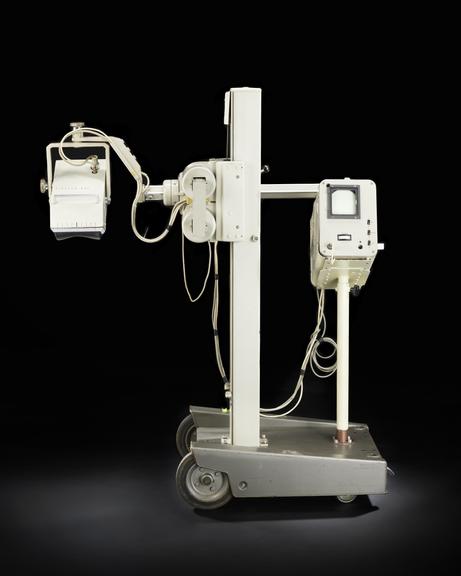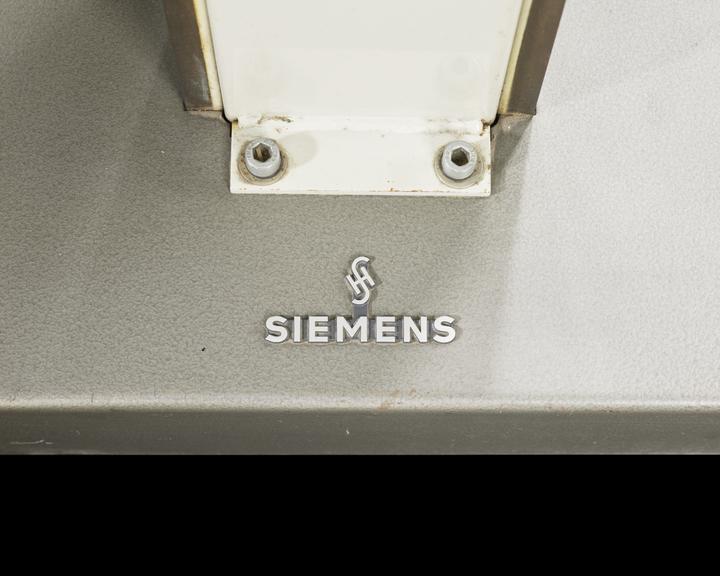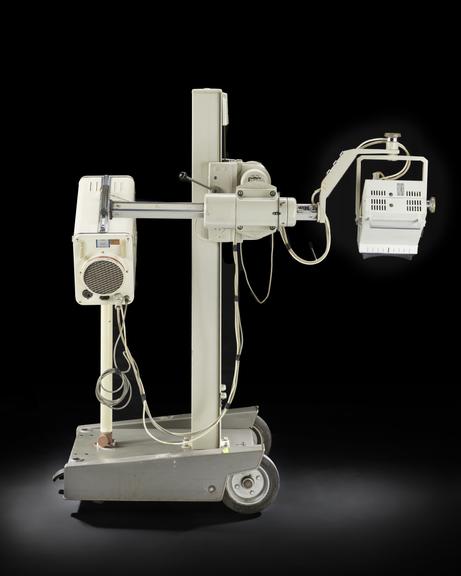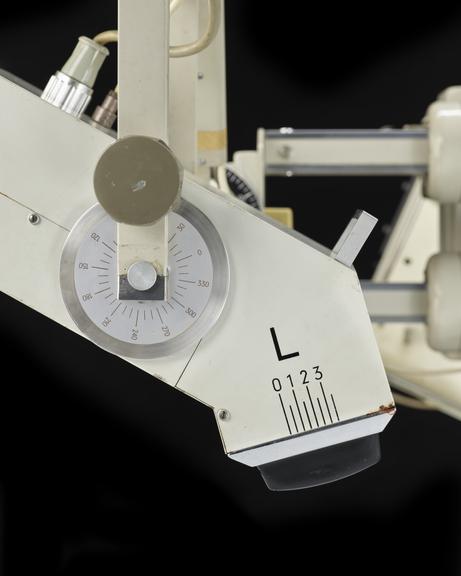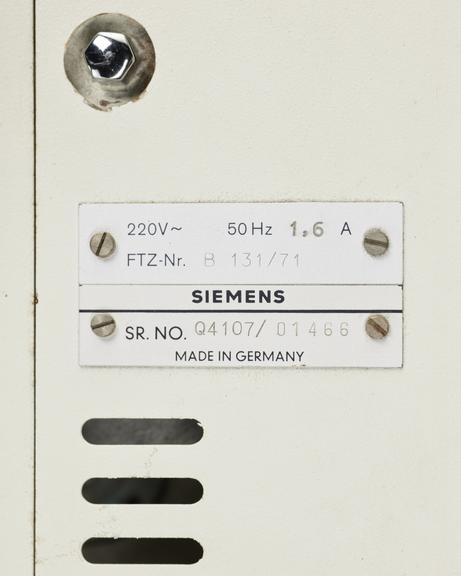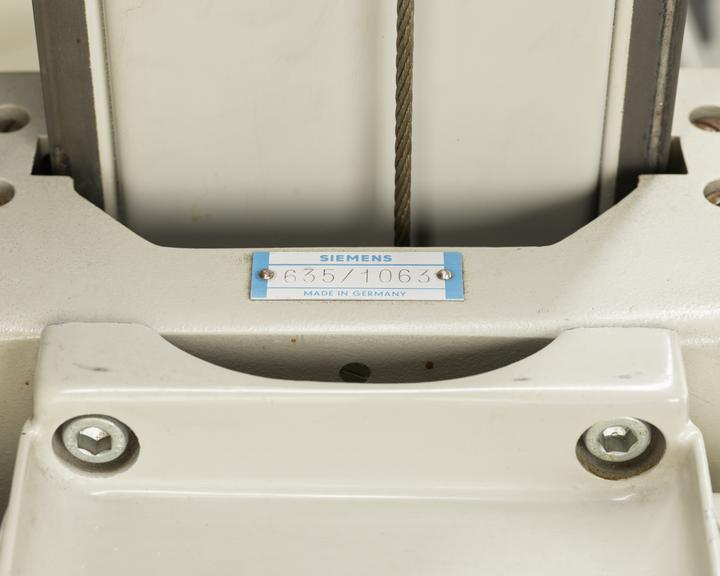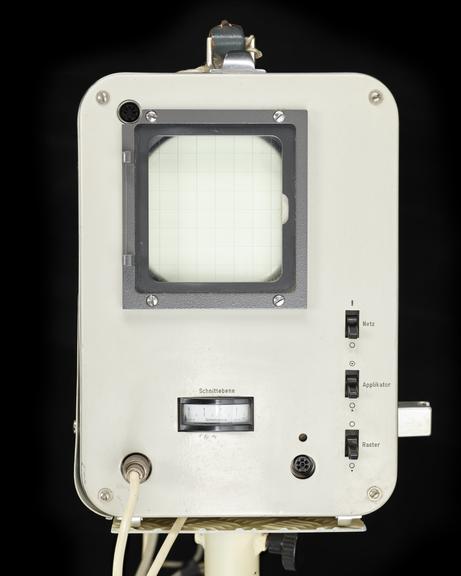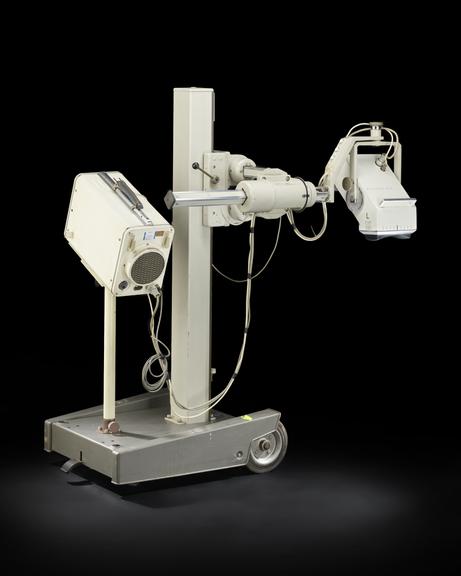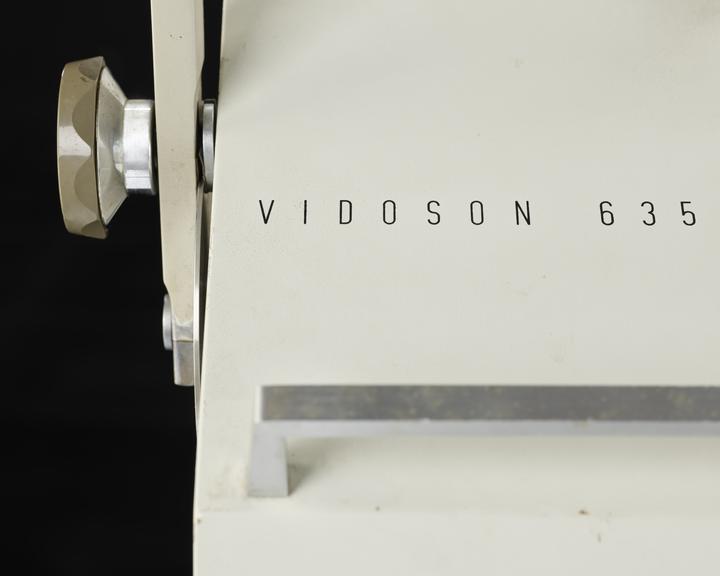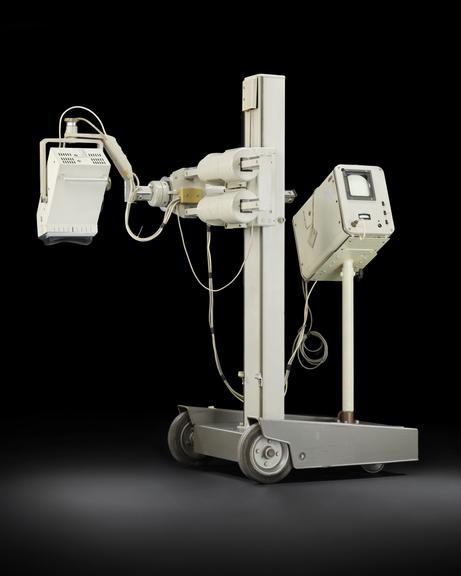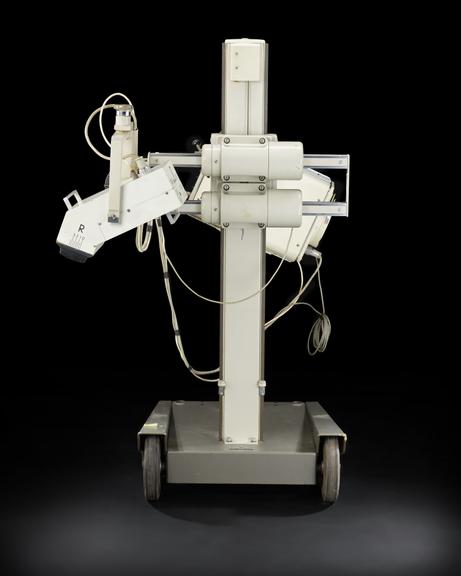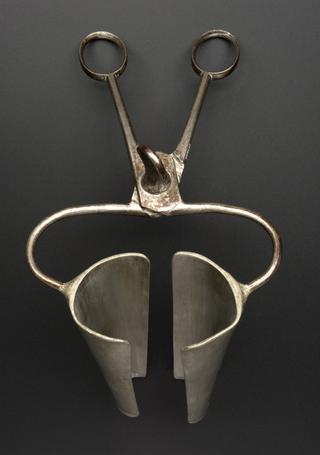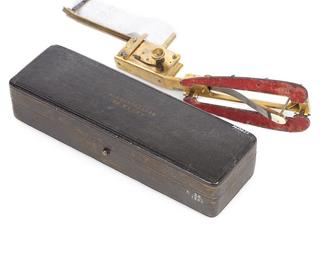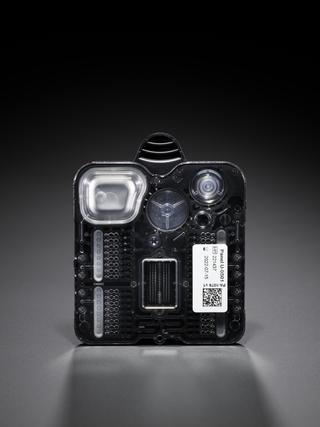Mechanical real-time scanner ‘Vidoson 635’
Mechanical real-time scanner ‘Vidoson 635’, Siemens, Germany 1965.
More
Developed by Siemens engineers, including Richard Soldner (b1935), the ‘Vidoson 635’ was the first ultrasound machine to show real-time observation inside of people’s bodies. 2D grey scale images showed movement and anatomical structures. Soldner was trying to solve the issue of improved resolution, showing different grey scales and faster scanning in breast screening. The Vidoson was his solution.
After unsuccessful initial testing in 1962 and further setbacks in 1965, a team including Hans J Hollander at the gynaecological hospital in Münster looking for ways to perform abdominal ultrasound diagnostics. Prototypes of the Vidoscan were sent to the hospital with Richard Soldner and engineer Walter Krause. Beginning with reproducing the work of those working with ultrasound to diagnose gynaecological conditions, the team extended its use to foetal and obstetric imagining. For the first time, foetal heartbeats and breathing could be seen in real time. Prior to the use of ultrasound, X-rays were used and only showed static images. Medical opinion of up the 1950s were that low doses of x-rays were safe. Alice Stewart’s work demonstrated the link between foetal x-rays and childhood cancers. Despite publishing her study in 1958, it took years for her work to be taken seriously.
This success in obstetric and foetal imagining led to the Vidoson being put into production. Around 3000 units, including this one were sold and used across Europe. By 1980, the Vidoson was no longer made, being overtaken by improved technologies.
- Measurements:
-
overall: 1650 mm x 1830 mm x 1100 mm, 200 kg
- Materials:
- metal , electronic components , plastic , rubber and lead
- Object Number:
- 2023-469/1
- type:
- ultrasound scanner
- Image ©
- The Board of Trustees of the Science Museum
